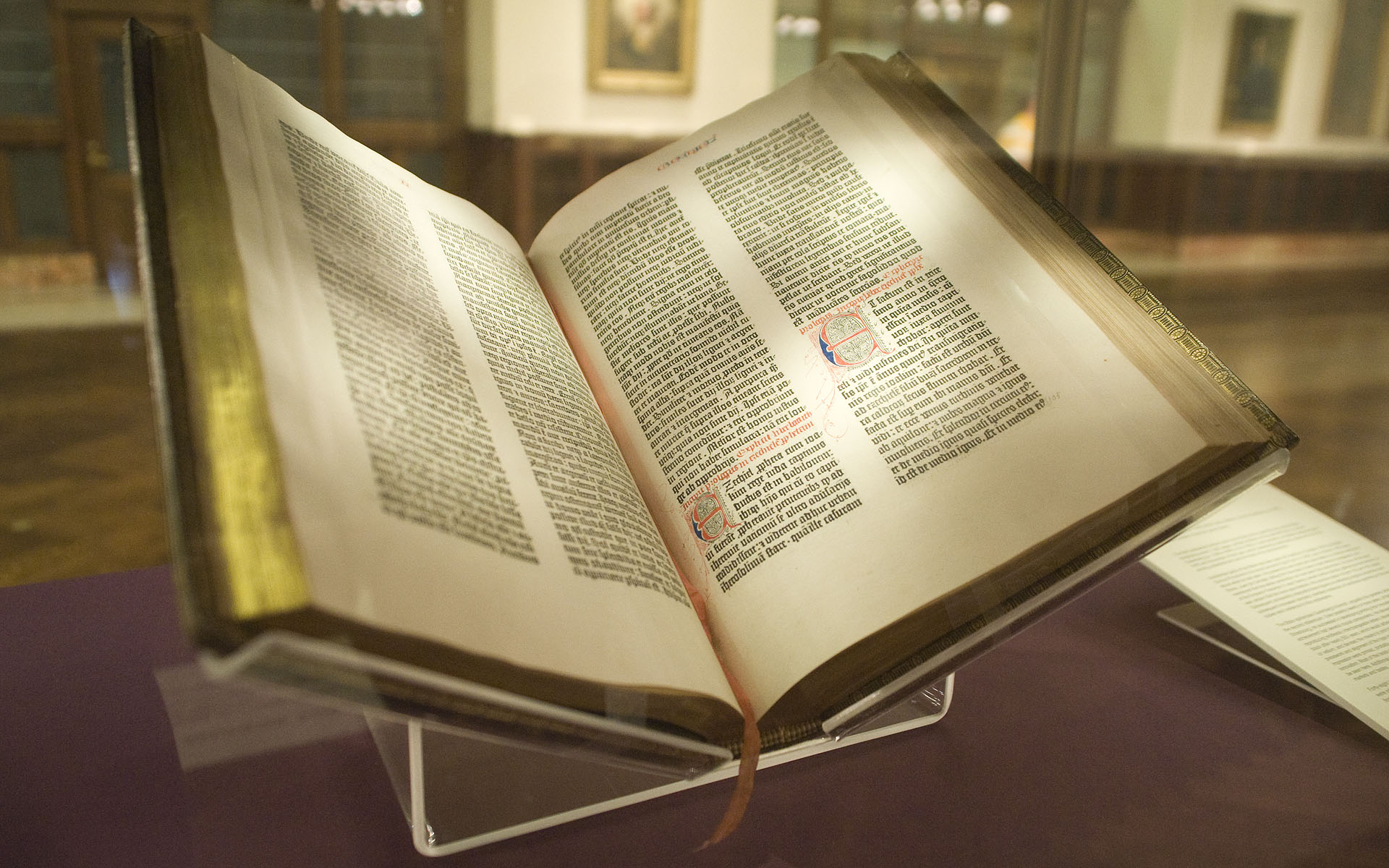The Holy Bible is the world’s most well-known book, read by billions throughout history reaching far and wide to every corner of the world. Not only is it today’s number one best seller with five billion plus copies sold and distributed, it’s also number one on the list of books ever printed.
Johannes Gutenberg is credited with the invention of the movable type printing press some time around the year 1440. A Catholic man, it was fitting the first book he printed using his invention was the Bible, his seminal work entitled the Gutenberg Bible.
Shortly after inventing the printing press, Gutenberg began preparation for printing an edition of the Latin Vulgate around the year 1450. Gutenberg and his apprentice Peter Schöffer worked for 4 years on printing the “42-line Bible.” By the 1454-1455, they had produced finished copies: the first movable type printed book ever was officially the Bible.

While the exact number is not known, its thought that Gutenberg printed between 158 and 180 copies of the Bible: three quarters were printed on paper, and the remaining printed on vellum. A future Pope Pius II was the first clergy member to see the Bible in person, writing to Cardinal Carvajal in March of 1455.
“All that has been written to me about that marvelous man seen at Frankfurt is true. I have not seen complete Bibles but only a number of quires of various books of the Bible. The script was very neat and legible, not at all difficult to follow — your grace would be able to read it without effort, and indeed without glasses.” – Pope Pius II
Today, 49 copies of the Gutenberg Bible remain, with only 21 being complete works. Despite very little information available today about Gutenberg’s life or his time spent printing the first Bible, it’s importance cannot be understated, as many scholars would call it one of the most important in the history of the world:
“The invention of Gutenberg should be classed with the greatest events in the history of the world. It caused a revolution in the development of culture, equaled by hardly any other incident in the Christian Era. Facility in disseminating the treasure of the intellect was a necessary condition for the rapid development of the sciences in modern times. Happening as it did just at the time when science was becoming more secularized and its cultivation no longer resigned almost entirely to the monks, it may be said that the age was pregnant with this invention. Thus not only is Gutenberg’s art inseparable from the progress of modern science, but it has also been an indispensable factor in the education of the people at large. Culture and knowledge, until then considered aristocratic privileges peculiar to certain classes, were popularized by typography, although in the process it unfortunately brought about an internal revolution in the intellectual world in the direction of what is profane and free from restraint.” – Catholic Encyclopedia
Photo credit: NYC Wanderer (Kevin Eng) via Wikimedia Commons | Mark C. Morris / Shutterstock.com

















